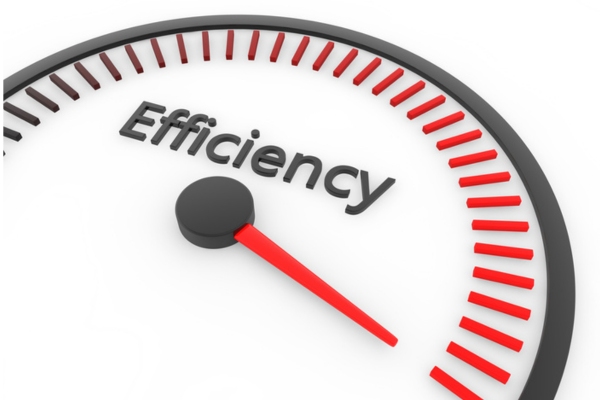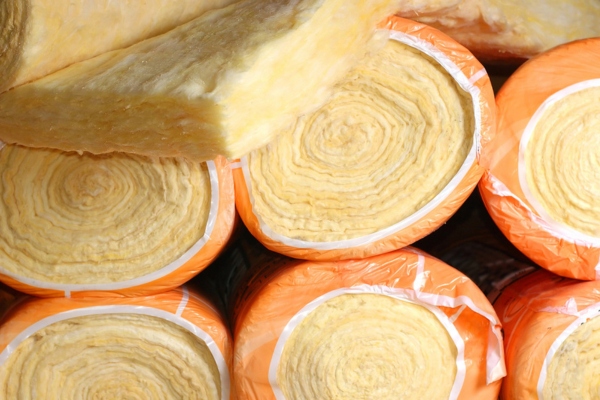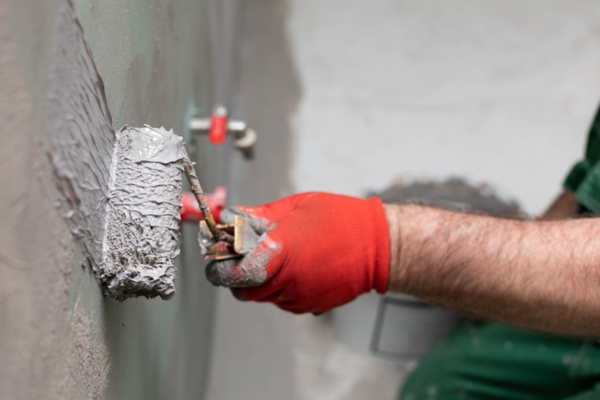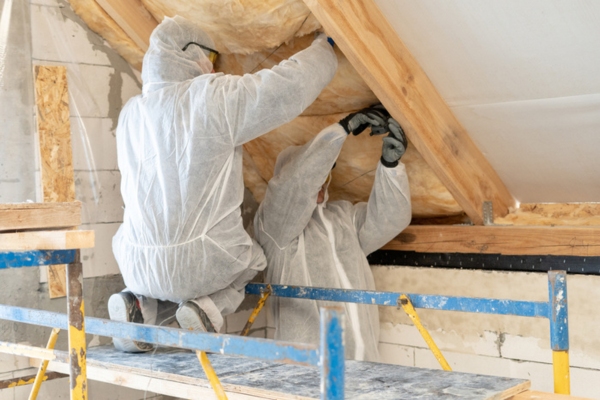Combining Traditional Insulation with Insulating Paints for Maximum Efficiency

Effective insulation is critical in buildings to optimize energy efficiency, reduce heating and cooling expenses, and ensure comfortable indoor environments. Traditional insulation methods, like fiberglass, spray foam, and foam boards, have been widely used for decades due to their proven effectiveness. However, an emerging trend in the construction industry is the use of insulating paint.
This new trend offers additional thermal resistance and can be applied to various surfaces. This article from Ascend Construction explores the benefits of combining traditional insulation materials with insulating paints to achieve maximum efficiency in building insulation.
Understanding Traditional Insulation
Contents
- Understanding Traditional Insulation
- Introduction to Insulating Paints
- Combining Both Insulation Methods for Enhanced Performance
- Professional Insulation Installation Advantages
- Cost-Benefit Analysis
- Environmental Impact and Sustainability
- Frequently Asked Questions
- How Does Insulating Paint Work With Traditional Insulation to Improve Energy Efficiency?
- Can Insulating Paint Be Used in All Types of Buildings?
- What Are the Long-Term Benefits of Combining These Insulation Methods?
- How Often Does Insulating Paint Need to Be Reapplied?
- Is Insulating Paint Effective in Extreme Weather Conditions?
- Conclusion
- Contact Ascend Construction for Premier Insulation Services in Fort Collins, Colorado
Traditional insulation materials have long been the cornerstone of energy-efficient building practices, providing reliable thermal resistance and comfort.
Types of Traditional Insulation

The most common types of traditional insulation include:
- Fiberglass Insulation: This is made from fine glass fibers and is available in rolls, batts, and loose-fill forms. It offers excellent thermal resistance, is fire-resistant, and is affordable. It is typically used in walls, attics, and floors.
- Cellulose Insulation: This comprises recycled paper products, primarily newsprint, treated with fire-retardant chemicals. It provides good thermal performance and is eco-friendly. Typically used in attics and wall cavities, cellulose insulation effectively reduces air leakage and enhances overall energy efficiency. It also has soundproofing properties.
- Foam Insulation: This includes materials like polystyrene and polyurethane, available in rigid boards, spray-applied forms, and loose-fill. Foam insulation offers high insulating value with minimal thickness, making it ideal for spaces with limited room. It is commonly used in foundations, walls, and roofs and provides moisture resistance, preventing mold and mildew growth.
Introduction to Insulating Paints
Insulating paints are an innovative solution in the field of energy efficiency, offering a modern complement to traditional insulation methods.
What is Insulating Paint?

Insulating paints incorporate advanced technology to enhance thermal resistance. They contain microscopic ceramic or glass beads, which create a reflective barrier that reduces heat transfer. When applied to surfaces, these paints reflect heat away in the summer and retain warmth in the winter, contributing to improved energy efficiency. The composition typically includes a mix of these insulating beads within an acrylic or latex paint base, making it suitable for various applications.
Discover insulation solutions tailored to your home. Call Ascend Construction to book your free appointment today!
Benefits of Insulating Paints
Insulating paints offer several key benefits. They are easy to apply, require no specialized skills or equipment, and can be used on various surfaces, including walls, roofs, and floors. This ease of application allows for quick and efficient enhancement of a building’s thermal performance.
Additionally, insulating paints provide aesthetic flexibility, as they are available in various colors and finishes, blending seamlessly with the existing decor. By complementing traditional insulation methods, insulating paints can improve energy efficiency, lowering heating and cooling costs and increasing comfort.
Combining Both Insulation Methods for Enhanced Performance
Using traditional insulation and insulating paints together can significantly boost a building’s energy efficiency and thermal performance.
Synergistic Effects
Combining traditional insulation with insulating paints enhances thermal resistance and overall building performance. Traditional materials like fiberglass, cellulose, and foam effectively reduce heat transfer. When paired with reflective insulating paints, energy efficiency is optimized.
Insulating paints minimize heat loss in winter and reflect heat in summer, ensuring stable indoor temperatures and addressing gaps that traditional insulation might miss. This synergy leads to significant energy savings, reduced heating and cooling expenses, and a lower carbon footprint. Additionally, it extends the HVAC system’s lifespan. By leveraging both methods, buildings achieve superior energy efficiency and sustainability.
Transform your living space with expert insulation. Contact Ascend Construction to arrange your complimentary consultation now!
Professional Insulation Installation Advantages
Choosing professional installation for insulation ensures optimal performance and safety.
Why Choose Professional Installation?

Professional installers, like those at Ascend Construction, bring expertise and precision to each project. Their experience ensures that insulation is applied correctly, reducing the risk of gaps or improper installation, which can compromise energy efficiency and building safety. Improper installation can lead to thermal bridges, increased energy costs, and moisture issues, negatively impacting building performance.
Technological Integration
Professionals use advanced techniques and materials to maximize insulation effectiveness and energy efficiency. This includes the latest insulation technologies, such as high-performance foam and cutting-edge insulating paints, and precise application methods for a seamless thermal barrier. Ascend Construction’s commitment to quality and innovation ensures that every project meets the highest insulation effectiveness and sustainability standards.
Cost-Benefit Analysis
Evaluating the costs and benefits of combining traditional insulation with insulating paints is crucial for informed decision-making.
Initial Costs vs. Long-Term Savings

While the upfront costs of materials and installation might be significant, the long-term savings in energy bills for homeowners can offset these initial expenses. Investing in traditional insulation and insulating paints can substantially reduce heating and cooling costs.
This combined approach enhances energy efficiency, lowering energy consumption and reducing utility bills. Consequently, the long-term financial benefits often outweigh the initial investment, making this a cost-effective strategy for improving building performance and sustainability.
Environmental Impact and Sustainability
Using eco-friendly materials in insulation contributes significantly to environmental sustainability and energy efficiency.
Eco-Friendly Materials

Both traditional insulation and insulating paints offer environmentally beneficial options. Sustainable materials, such as recycled cellulose insulation and low-VOC (volatile organic compounds) insulating paints, reduce construction projects’ environmental footprint. These materials minimize waste, lower greenhouse gas emissions, and promote the use of renewable resources, contributing to a healthier and more sustainable building environment.
Enhance your home’s insulation for all-season comfort. Reach out to Ascend Construction for a no-obligation consultation!
Contribution to Green Building Standards
Combining traditional insulation with insulating paints can help projects achieve green building certifications, such as the Leadership in Energy and Environmental Design (LEED) or the Building Research Establishment Environmental Assessment Method (BREEAM).
These certifications recognize buildings that meet high standards for energy efficiency, resource conservation, and indoor environmental quality. Using a combination of advanced insulation methods, builders can improve their projects’ sustainability and earn valuable recognition for their commitment to green building practices.
Frequently Asked Questions

Here are some common questions about combining traditional insulation with insulating paints to improve energy efficiency.
How Does Insulating Paint Work With Traditional Insulation to Improve Energy Efficiency?
Insulating paint adds a reflective layer that reduces heat transfer, complementing traditional insulation’s thermal resistance. This combination enhances the overall energy efficiency by minimizing winter heat loss and reflecting summer heat.
Can Insulating Paint Be Used in All Types of Buildings?
Yes, insulating paint can be applied to various building types, like commercial, residential, and industrial structures. It is versatile and can be used on walls, roofs, and floors.
What Are the Long-Term Benefits of Combining These Insulation Methods?
Combining traditional insulation with insulating paint offers long-term benefits, including reduced energy bills, enhanced indoor comfort, extended HVAC system lifespan, and improved building durability. It also helps reduce the carbon footprint.
How Often Does Insulating Paint Need to Be Reapplied?
Insulating paint typically has a long lifespan and must not be reapplied frequently. The exact duration relies on factors such as the quality of the paint, environmental conditions, and surface maintenance, but it generally lasts several years.
Is Insulating Paint Effective in Extreme Weather Conditions?
Yes, insulating paint is effective in extreme weather conditions. It helps maintain stable indoor temperatures by reflecting heat away in hot climates and retaining warmth in cold climates, enhancing the building’s overall thermal performance.
Conclusion
Combining traditional insulation with insulating paints enhances thermal resistance, improves energy efficiency, and ensures cost-effectiveness. This integrated approach reduces energy bills, prolongs HVAC system lifespan, and provides superior indoor comfort. Additionally, it supports environmental sustainability by using eco-friendly materials and contributing to green building standards. Adopting this dual method offers significant long-term benefits, making it an excellent choice for modern, energy-efficient construction.
Contact Ascend Construction for Premier Insulation Services in Fort Collins, Colorado
Given the significant variations in quality and cost in the market, select a provider for air sealing and insulation upgrades that combines professional expertise with competitive pricing. Ascend Construction is a leading choice, providing various services such as insulation removal and installation, air sealing, energy conservation measures, energy audits, and whole-house fan installations. Opt for Ascend Construction for unmatched service that meets and exceeds your expectations, establishing a new benchmark for excellence in the industry.

Reach out to Ascend Construction for a complimentary consultation. Our team is ready to offer effective solutions for your home in Fort Collins, focusing on those critical areas needing attention. Our services are competitively priced, and we stand behind the quality of our work with a guarantee. For direct communication, click here or use the button below to call Ascend Construction. We provide free, no-obligation, in-home consultations to evaluate your needs thoroughly.
Ascend Construction
301 S Howes St #1241
Fort Collins, CO, 80521
Related Articles:
- Silent Notes: Soundproofing & Insulating Your Home Music Room
- Blockbuster Comfort: Insulating Your Home Theater for the Ultimate Viewing Experience
- Fitness-Friendly Insulation: Crafting The Perfect Climate For Your Home Gym
- The Ultimate Guide to Insulating Your She Shed for Year-Round Comfort
- Cool Roofs & Insulation: A Dynamic Duo For Beating The Heat